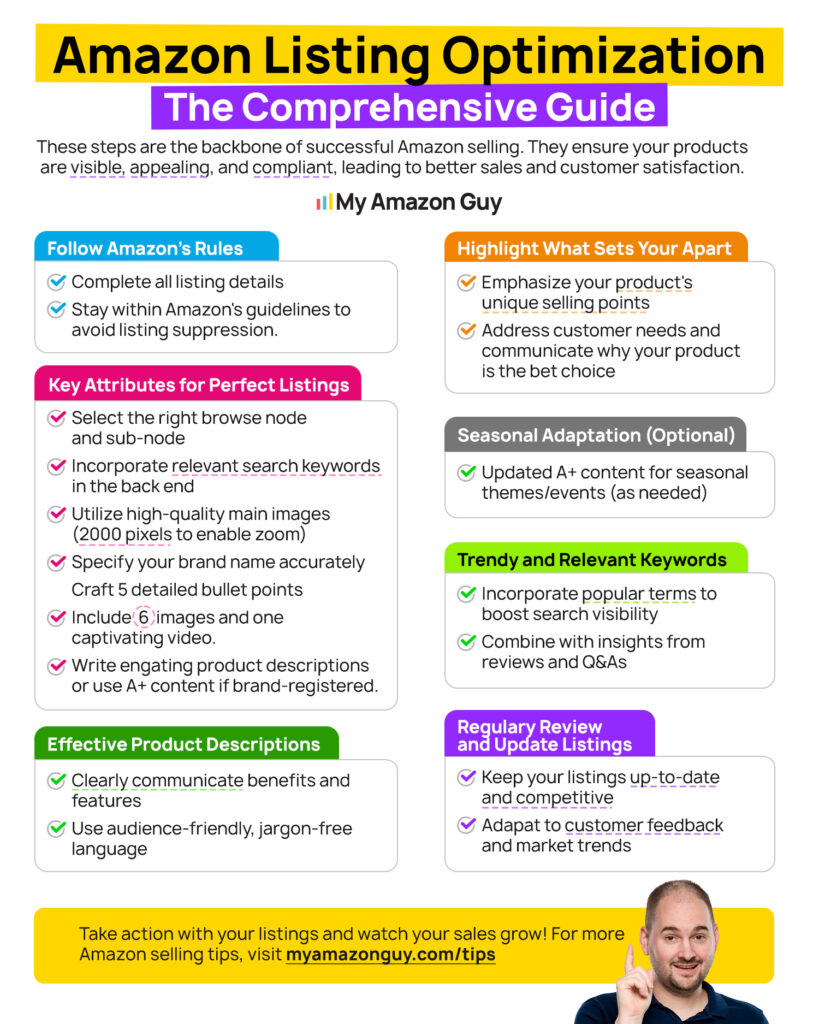Curious if Amazon Rufus AI really works? Amazon claims its AI-powered shopping assistant, Rufus, enhances product discovery and benefits both shoppers and sellers.
It’s supposed to provide smarter recommendations and improve search functionality. Some experts believe Rufus is a game-changer, while others argue it’s overhyped.
Amazon has patented AI technologies related to search and ranking, but is Rufus truly shaping what appears in search results? In this article, we’ll learn how Rufus works on Amazon and whether it affects product rankings.
What Is Amazon Rufus AI?
According to Amazon, Rufus is a generative AI-powered conversational shopping assistant designed to help customers make more informed purchasing decisions. It answers a wide range of shopping-related questions within the Amazon Shopping app.
For sellers, Rufus provides an opportunity to engage customers by offering instant, AI-driven responses to product inquiries. This tool ensures products are accessible and well-represented with detailed, accurate answers based on Amazon’s product catalog and customer feedback.
Amazon Rufus AI's Claims vs The Reality
Amazon claims Rufus AI will revolutionize product rankings, but does it live up to the hype? Let’s take a closer look at the claims versus the actual impact of Rufus.
Claim 1
Rufus will help sellers rank their products by understanding and interpreting images and semantic keywords, improving search results.
Reality: Rufus cannot read the text in images or rank listings based on that. It can understand semantics but doesn’t extract new keywords from images.
Claim 2
Rufus integrates into the broader Amazon shopping experience, enhancing how shoppers find products.
Reality: Rufus isn’t a game-changer as Amazon claims. Seller feedback suggests many haven’t interacted with Rufus on Amazon recently, indicating it’s not having a significant impact.
Claim 3
Rufus’s AI summaries can help products rank by understanding customer sentiment and keywords.
Reality: While Rufus can interpret semantic data, it doesn’t directly influence rankings. AI summaries don’t contain the critical keywords that influence search performance.
What Helps Rank Products on Amazon?
Ranking your products on Amazon is essential for driving sales and increasing visibility. While Amazon Rufus shows promise, its full impact on rankings remains unclear, so relying on methods designed specifically for it isn’t advisable at this stage.
For now, sticking to proven, traditional methods is still the most effective strategy for boosting product visibility on Amazon:
Search Query Performance Report (ICAP Report)
The ICAP report gives valuable insights into impressions, clicks, add-to-carts, and purchases for specific search terms. This data helps sellers track keyword performance, including search volume, CTR, and conversion rates.
Alt Text and A+ Content
Alt text in images and well-crafted A+ content are essential for Amazon SEO. These elements help improve the product listing, enhance the customer experience, and contribute to better ranking.
Proven SEO Practices
Optimizing titles, using back-end search terms, and writing detailed product descriptions are still vital for ranking success. Amazon’s algorithm relies on these traditional SEO methods to determine product relevance and visibility.
Is Rufus the Future of Ranking on Amazon?
Amazon Rufus shows potential to enhance product visibility and improve the shopping experience for customers in the future. However, its current impact on rankings and indexing is unproven, so adjusting strategies to cater specifically to Rufus isn’t recommended just yet.
In the meantime, traditional SEO methods continue to be the most effective way to boost product rankings on Amazon. While Rufus presents an interesting innovation, sellers should focus on proven techniques to ensure their products remain visible and rank effectively.
Want to improve your Amazon sales strategy? Contact our Amazon agency and get help from our Amazon experts today!








